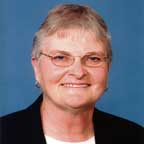
Do you remember December 2nd and 3rd, 1990? Iben Browning, a scientific generalist, predicted a devastating earthquake on the New Madrid fault line around those two days. The prediction was widely reported in the national media and caused considerable concern among residents of the Mississippi Valley. But when there was no seismic activity in the area on those dates, the stir that had been created was followed by scorn and ridicule.
Three New Madrid earthquakes in Missouri that took place in 1811 and ’12 represent some of the strongest earthquakes in the contiguous United States in recorded history, with magnitudes estimated at 7.8. There is some debate about if or when a large earthquake might happen again. Scientists in the 1980s said that there was a 90-percent chance of a quake with a magnitude of 6 or 7 happening within 50 years. That might have been the basis for Mr. Browning’s prediction. But then the United States Geological Survey in 2007 reported that within 50 years, there was only a 25- to 40-percent chance of a quake happening.
Although the prophecy of Mr. Browning never came true, people were at least learning about earthquake and volcanic eruption coverage available on homeowner and business insurance policies. A special deductible applies to the endorsement—it is arrived at by multiplying the percent you choose by each of your set limits: building/dwelling, extensions and personal property.
The deductible in today’s endorsement most commonly starts at 20 percent. For example, if the building is covered for $200,000, there has to be $40,000 in damage before the insurance would pay. Each section of coverage carries a separate deductible percentage, unlike the base policy coverage that has a fixed dollar amount for the entire property sections. Should you carry earthquake and volcanic eruption insurance? That is actually the name of the endorsement, although we in this part of the country are unlikely to experience a volcanic eruption, and the risk of damage to our home or business from an earthquake is debatable. Check with your insurance agent to see what the cost would be. In the event of an earthquake, masonry-constructed buildings have the highest risk, but there are some stipulations for eligibility of coverage.
Earthquakes happen every day of the year somewhere in the world, most without any warning. In this part of the country, we are more threatened by tornadoes and floods. According to FEMA, floods are the No. 1 natural disaster in the U.S., and 25 percent of businesses that close their doors during a disaster never reopen them. Tornadoes can occur any time of the year, any hour of the day or night. I can now offer a free service to clients that alerts them to impending tornadoes. When a warning is issued, those customers who sign up for the service are called and sent emails, and the service is active 24 hours a day.
Natural disasters make up the most important reason for insurance—to protect ourselves from uncommon, but financially devastating, events. iBi

